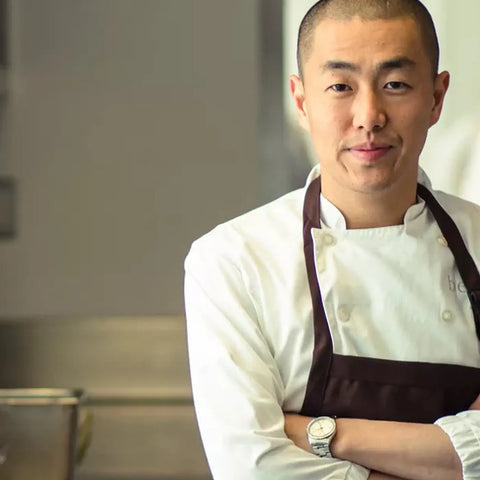
Why Modern Korean Cuisine Is Thriving in the Fine Dining Scene
In recent years, modern Korean cuisine has made a remarkable ascent in the world of fine dining. From Michelin-starred establishments in Seoul to acclaimed restaurants in global capitals like New York, Paris, and London, Korean chefs have captured the attention of food critics and gastronomes alike. So, what has led to this rise? Here’s a look at the key factors behind the success of modern Korean food in the fine dining scene.
1. A Focus on Ingredients and Seasonal Flavors

One of the hallmarks of modern Korean cuisine is its deep respect for ingredients, particularly those that are seasonal and locally sourced. Korean cooking has a long tradition of using ingredients like wild herbs, fresh seafood, and carefully fermented vegetables. This aligns perfectly with fine dining’s focus on high-quality, farm-to-table ingredients.
In a Korean fine dining experience, you’ll often find dishes that celebrate the essence of each ingredient. For instance, simple elements like fermented soybean paste (doenjang) or perilla leaves are transformed into complex flavor profiles that elevate traditional flavors into a new realm of sophistication. This focus on freshness and seasonality not only appeals to today’s health-conscious diners but also fits seamlessly into the philosophy of many high-end restaurants around the world.
2. A Blend of Tradition and Innovation

Modern Korean chefs are masters at balancing the old with the new. They have taken classic dishes—like kimchi, bibimbap, and galbi—and reimagined them using innovative techniques and presentation styles. This allows them to create unique dining experiences that feel both familiar and entirely novel.
Chefs like Mingoo Kang at Mingles and Jun Lee at Soigné have perfected this balance, incorporating traditional Korean ingredients and methods into dishes that are plated with the finesse and artistry expected in fine dining. For example, a traditional Korean barbecue might be deconstructed into delicate slices of beef, served with refined sauces and garnishes that reinterpret the original dish while preserving its soul. This approach has allowed Korean cuisine to find a natural place alongside other high-end dining experiences.
3. Storytelling Through Culinary Artistry

Fine dining is not just about great food; it’s about creating an experience, and modern Korean cuisine excels at this through storytelling. Many Korean chefs use their food to tell stories about Korean history, culture, and personal experiences. They bring the rich cultural heritage of Korea to the plate, creating dishes that evoke memories of family meals, traditional celebrations, or even childhood snacks.
This storytelling adds a layer of meaning to each dish, making it more than just food. It creates an immersive experience that resonates with diners seeking a deeper connection to their meal. It’s a philosophy that makes modern Korean restaurants memorable and distinct, helping them stand out in a crowded fine dining landscape.
4. Riding the Wave of Global Food Trends
Korean cuisine’s rise has coincided with broader global trends that favor bold flavors, authenticity, and sustainability. As diners worldwide become more adventurous with their palates, they are drawn to the spicy, umami-rich, and fermented flavors that define Korean food. Chefs are introducing diners to the joys of gochujang (Korean chili paste), doenjang (fermented soybean paste), and jeotgal (fermented seafood), flavors that bring complexity and depth to each dish.
Additionally, many modern Korean restaurants embrace sustainability by sourcing local ingredients and focusing on minimal waste—a trend that resonates with today's eco-conscious diners. By blending these global concerns with Korean culinary traditions, chefs have made their cuisine both trendy and timeless.
5. Global Recognition and Awards

The role of food media cannot be underestimated in the rise of Korean cuisine in fine dining. Renowned international food guides, such as the Michelin Guide and “The World’s 50 Best Restaurants,” have highlighted Korean restaurants and chefs, bringing them into the global spotlight. The accolades not only validate the chefs' hard work but also attract international food lovers eager to experience something new.
This recognition has helped to position modern Korean cuisine as a serious contender on the world’s culinary stage. It has also sparked interest among diners who may not have been familiar with Korean food, drawing them to restaurants that offer a refined take on traditional dishes.
6. The Perfect Marriage of Technique and Emotion

At its core, the success of modern Korean cuisine in fine dining comes down to the ability of chefs to combine technical mastery with deep emotional resonance. While the dishes are executed with precision, they are also infused with a sense of nostalgia and cultural pride that makes each bite feel like a journey.
This balance of technique and emotion is what makes dining at a modern Korean restaurant such a compelling experience. It’s not just about tasting flavors—it’s about understanding a culture, a heritage, and the stories that each chef carries with them. And it’s this richness that has earned modern Korean food its place among the elite in the fine dining world.
A Lasting Place in the Fine Dining Scene
As modern Korean cuisine continues to grow and evolve, it’s clear that its place in the fine dining scene is no passing trend. The combination of innovative techniques, respect for ingredients, and a strong cultural narrative has created a cuisine that resonates deeply with diners around the world. Whether you are enjoying a delicate tasting menu in Seoul or a fusion dish in New York, the spirit of Korean food—its flavors, its stories, its passion—shines through, making it a true star of the global culinary stage.
